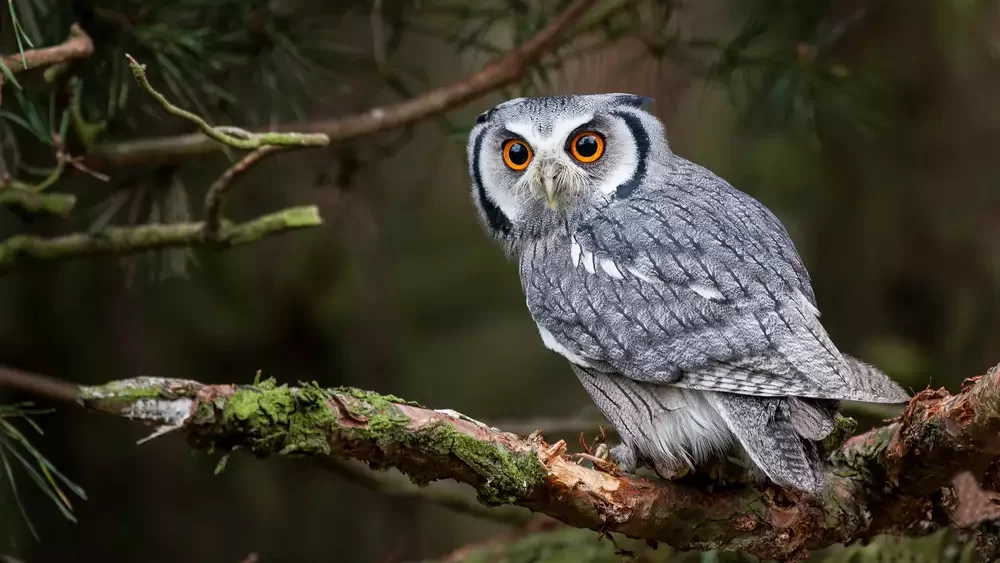Among the fascinating creatures of the night, owls hold a special place due to their unique characteristics and intriguing behaviors. They are admired for their nocturnal habits, incredible vision, and the eerie beauty that surrounds them. However, understanding the terminology used to describe different aspects of these creatures, particularly their gender, is often overlooked.
The term for a female owl is a “hen.” This is a common term used across many bird species to denote the female gender. By diving into this subject, we not only learn a new word but also appreciate the complexities and wonders of nature, including the role female owls play in their species’ survival.
This article aims to delve deeper into the world of owls, focusing on the females—known as hens. The journey includes unraveling unique traits of owl hens, understanding their roles in the owl community, and much more.
What is a Female Owl Called?
A female owl is known as a “hen,” similar to many other bird species. This term is used universally across various languages and cultures, indicating the widespread nature of this classification. It’s important to familiarize oneself with such terms when studying or observing bird life, as it helps in better understanding their social structures and behavioral patterns.
Owl Gender Differences
Female and male owls can often be distinguished based on physical and behavioral characteristics. Typically, female owls, or hens, are larger than their male counterparts. This size difference is often noticeable in their body length, wingspan, and weight.
Behaviorally, male and female owls also show differences. Male owls are usually more vocal and have a significant role in courtship rituals. On the other hand, female owls primarily focus on nesting and taking care of the young ones.
The Role of a Female Owl in the Owl Community
In the owl community, the female plays an integral part. After courtship and mating, the female owl prepares the nest for the upcoming offspring. This could involve finding a suitable location, such as a hollow tree or a cliff edge, and shaping the nest appropriately.
Once the eggs are laid, it is primarily the hen’s responsibility to incubate them until they hatch, while the male owl takes on the duty of providing food. Post-hatching, female owls continue to care for the owlets until they are ready to leave the nest.

Interesting Facts about Female Owls
Female owls are fascinating creatures, housing several unique traits. For instance, the larger size of the female owl often aids in defending the nest from potential predators. Moreover, hens exhibit a remarkable sense of maternal instincts, often putting themselves in danger to protect their young.
Another intriguing fact about owl hens is the ability to lay eggs even without fertilization, a phenomenon known as parthenogenesis. However, such eggs do not typically develop into chicks.
The Lifespan of a Female Owl
The lifespan of a female owl varies across different species. On average, owl hens live between 10 to 15 years in the wild. However, factors such as species, habitat, and diet can significantly influence their lifespan. In captivity, with the absence of predators and regular food supply, female owls can live up to 20 years or more.
Common Species of Owls and Their Females
There are several owl species around the globe, each having distinct traits. For example, in the case of Barn Owls, female owls often have more spots on their underparts compared to the males. Great Horned Owls, on the other hand, display noticeable size differences between the genders, with females being the larger of the two.
How to Identify a Female Owl
Identifying a female owl in the wild can be challenging but not impossible. Observers can look for certain clues such as size, coloration, and behavior. As mentioned earlier, females are generally larger and may have distinctive patterns or markings. Observing nesting behavior can also be a strong indication of the bird being a female owl.
Frequently Asked Questions
Do female owls have a specific call different from males?
While the call of an owl often depends on its species, in most cases, both males and females have similar sounding calls. However, the frequency or the purpose of the call may vary based on gender and specific situations.
How many eggs does a female owl typically lay?
The number of eggs laid by a female owl depends on the species, but it typically ranges from 2 to 6 eggs. Some species may lay more, while others may lay less.
How often do female owls reproduce?
Most owl species reproduce annually. However, factors like food availability and the survival rate of previous offspring can influence the frequency of reproduction.
Conclusion
Female owls, or hens, play a vital role in the preservation and continuation of their species. They are responsible for nesting, incubation, and the initial care of the offspring. While identifying a hen in the wild may require a keen eye and some knowledge, understanding these remarkable creatures deeply enriches our appreciation for nature.
Whether it is their physical attributes, their behavioral patterns, or the intriguing facts surrounding them, female owls are undoubtedly fascinating. It’s clear that the world of owls is full of wonders, especially when it comes to the diligent and nurturing hens.